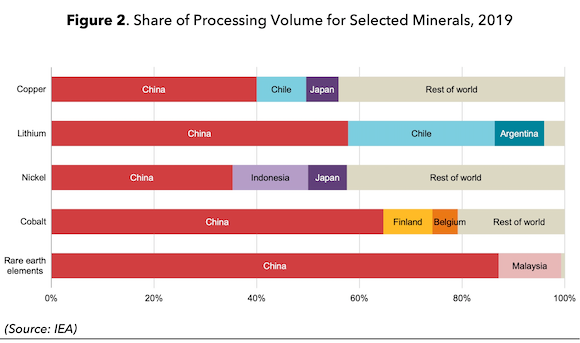Some people, not all of them liberals, think that electric vehicles are the wave of the future, part of an inevitable “green” revolution. But the facts suggest otherwise. My friend Robert Bryce testified before a House committee yesterday on the subject of electric vehicles. Robert is one of the country’s most knowledgeable experts on energy, and I encourage you to read his entire testimony. Here are some highlights as summarized by him:
* I’m pro-electricity, but I am adamantly opposed to the notion that we should “electrify everything” including transportation.
* EVs are cool. They are not new. The history of EVs is a century of failure tailgating failure. In 1911, the New York Times said that the electric car “has long been recognized as the ideal solution.” In 1990, the California Air Resources Board mandated 10% of car sales be zero-emission vehicles by 2003. Today, 31 years later, only about 6% of the cars in California have an electric plug.
* The average household income for EV buyers is about $140,000. That’s roughly two times the U.S. average. And yet, federal EV tax credits force low- and middle-income taxpayers to subsidize the Benz and Beemer crowd.
* Lower-income Americans are facing huge electric rate increases for grid upgrades to accommodate EVs even though they will probably never own one.
* This month, the California Energy Commission estimated the state will need 1.3 million new public EV chargers by 2030. The likely cost to ratepayers: about $13 billion.
* Meanwhile, blackouts are almost certain this summer and electricity prices are “absolutely exploding.” California’s electricity prices went up by 7.5% last year and they will likely rise another 40% by 2030. This, in a state with the highest poverty rate and largest Latino population in America. How is racial justice or social equity being served by such regressive policies?
* I also talked about resilience, saying “Electrifying everything is the opposite of anti-fragile. Electrifying transportation will put more of our energy eggs in one basket. It will make the grid an even-bigger target for terrorists, cyberthieves, or bad actors. It will reduce resilience and reliability in case of a prolonged grid failure due to natural disaster, equipment failure, or human error.”
I also highlighted the myriad supply-chain problems with EVs. Citing work done by the Natural History Museum in London, I said that electrifying half of the U.S. motor vehicle fleet would require in rough terms:
* 9 times the world’s current cobalt production
* 4 times global neodymium output
* 3 times global lithium production
* 2 times world copper production
I concluded by saying:
Oil’s dominance in transportation is largely due to its high energy density. That density and improvements in internal combustion engines and hybrids assure that oil will be fueling transport for decades to come. Powerful lobby groups want Congress to spend billions on electrification schemes that will impose regressive taxes on low-income Americans, reduce our resilience, and increase reliance on China. That’s a dubious trifecta.
Let’s amplify that last point: reliance on electric vehicles will put our future squarely in the hands of the Chinese Communist Party. Robert’s testimony included this stunning chart:

I suspect that for many Democrats, turning our future over to the Communist Chinese is a feature, not a bug. The extent to which the CCP has co-opted the American establishment by distributing cash freely is stunning.
Oh, and how deeply have EVs actually penetrated our transportation industry? This is revealing:
EVs still account for less than 1% of the 276 million registered vehicles in the U.S. Of all the EVs on U.S. roads, about 42% of them are in California. By contrast, states like South Dakota, North Dakota, Montana, and Wyoming each have less than 1,000 registered EVs. Furthermore, in 2020, fewer than 300,000 EVs were sold in the U.S. For comparison, Ford Motor Company sold nearly 800,000 F-series pickup trucks last year.
As a result of the “green” energy fad, blackouts are already fast on the way to becoming the new normal. If policymakers continue to mandate and subsidize electric vehicles, the U.S. will look like a third-world country, with electricity available only episodically and at rates unaffordable for most.
In August, Robert Bryce will be in Minnesota to team up with Center of the American Experiment’s Isaac Orr on programs that will highlight the environmental and land use evils of “green” energy.
Notice: All comments are subject to moderation. Our comments are intended to be a forum for civil discourse bearing on the subject under discussion. Commenters who stray beyond the bounds of civility or employ what we deem gratuitous vulgarity in a comment — including, but not limited to, “s***,” “f***,” “a*******,” or one of their many variants — will be banned without further notice in the sole discretion of the site moderator.